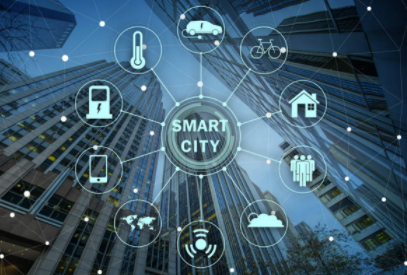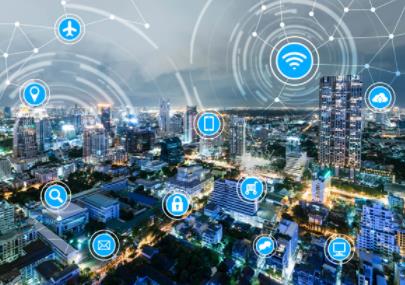
Smart City, refers to the use of various information technology or innovative ideas to integrate cities 'composition systems and services to improve the efficiency of resource application, optimize urban management and services, and improve the quality of citizens' life.
Smart cities make full use of the new generation of information technology in the high -level urban informatization of the next generation of innovation (Innovation 2.0) in all walks of life in the city, and realize the deep integration of informatization, industrialization and urbanization, which will help alleviate "Big City Diseases", improve the quality of urbanization, achieve refined and dynamic management, and improve the effectiveness of urban management and improve the quality of citizens' life.
The specific definition of smart cities is relatively wide. At present, the definition of widely recognized internationally is that smart cities are the new generation of information technology support and the urban form of the next generation of innovation (innovation 2.0) environment. The application of new generation of information technology such as the Internet of Things and cloud computing is more important to build a sustainable innovation ecosystem characterized by cities characterized by user innovation, open innovation, popular innovation, and collaborative innovation through the methodological application of innovative 2.0 in the knowledge society.
Smart cities promote sustainable economic growth and high quality of living through human and social capital, and investment in transportation, and information and communication infrastructure, and scientifically manage the above resources and natural resources through participating management. Some of the advanced cities of some smart cities have also increasingly highlighting the people -oriented sustainable innovation. For example, the European Union launched the Living Lab plan for knowledge -oriented social innovation 2.0, and is committed to the open innovation space of the city's joint participation around the needs of citizens. For example, the six indicators of the University of Vienna's evaluation of the urban system, namely the six aspects of intelligent economy, intelligent transportation industry, smart environment, smart residents, smart life and wisdom management. At present, the construction of smart cities is a hot issue in information technology and urban planning.
The concept of smart cities first originated from the concept of "smart earth" proposed by IBM. Similar concepts have digital cities before. In November 2008, at the beginning of the Global Financial Crisis from 2007 to 2012, the "Smart Earth" proposed by IBM's "Smart Earth: Next Generation Leadership Agenda" released in New York, USA, is the new generation of information technology.

Applaction in China:
"Smart Changshu" is a smart city construction project led by the Changshu Municipal Government. It was fully launched in May 2012, involving multiple aspects of social production, such as construction and improving citizen cards, communities, health, social security, public security, education, and family planning. Promote the integration of corporate informationization and industrialization to integrate social engineering such as the integration of enterprise information and industrialization.
This project is a typical project in China's construction of smart cities. Due to the uneven regional development, the government is very hoped that the construction of information can be improved and improved through information construction. Therefore, informatization construction will often be comprehensively integrated. In terms of the Internet of Things terminal, considering the difference in the level of user information knowledge, the combination of sensor equipment and traditional citizen cards is used as a main source of data to collect citizen data through citizen cards, and medical, transportation, education, and finance Service and other fields such as services; combined with the application of sensors, jointly build a comprehensive person, car, and data source network in cities. In terms of data transmission network construction, it is a comprehensive network platform combined with the telecommunications network and wireless network to ensure that smart business can be launched through computers, mobile smart terminals, and even TV phones. Not only ensure that high -education people in urban areas, but also a large number of urban and rural people can enjoy information services.
Although the construction of smart cities in my country is different, most of them have the following comparison characteristics:
Construction is led by the local government to solve the problem of concern for government affairs;
The purpose of building the purpose of service will serve people's livelihood, economic growth and public safety;
It is mainly based on the renovation of the old city, and the design elements of smart cities have also been added to the design of some demolition projects.
China's smart city construction is relatively closely combined with local characteristics. Generally, the construction of smart cities as an opportunity for local informatization construction. In addition to the initial concept of "improving the comprehensive competitiveness of the city" in urban management and urban operation and maintenance, In addition, it also includes the local government's policy of driving economic development and improving information infrastructure in the region. Therefore, the construction of smart cities in my country should be more combined with local reality and adopt appropriate technologies to gradually promote the concept of smart cities under the premise of improving local information construction.